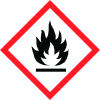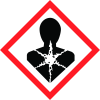M-8330-ADD-3-10X
AccuStandard, Inc
Revision date : 2014-05-21



Note: Ingredients listed on restricted chemical lists
EC/CAS
67-56-1
Name of the chemical
Methanol
Concentration
N/A
General Information
Revision date
2014-05-21
Product name
M-8330-ADD-3-10X
Product Synonyms
Methanol (50 50)
Supplier name
AccuStandard, Inc
Emergency telephone
1-203-786-5290
Icons in SDS
Company Information
Company name
AccuStandard, Inc
E-mail address of the competent person responsible for the Safety Data Sheet
edocs@accustandard.com
GHS Information
Signal word
Danger
Hazard Codes
Hazard statements (CLP)
H225, H301, H311, H315, H320, H332, H371
Hazard statements
Code
Statements
H225
Highly Flammable liquid and vapour
H301
Toxic if swallowed
H311
Toxic in contact with skin
H315
Causes skin irritation
H320
Causes eye irritation
H332
Harmful if inhaled
H371
May cause damage to organs
Precautionary statements
Code
Statements
P202
Do not handle until all safety precautions have been read and understood.
P262
Do not get in eyes, on skin, or on clothing.
P264
Wash ... thoroughly after handling.
P284
[In case of inadequate ventilation] Wear respiratory protection.
P338
Remove contact lenses, if present and easy to do. Continue rinsing.
P340
Remove victim to fresh air and keep at rest in a position comfortable for breathing.
P360
Rinse immediately contaminated clothing and skin with plenty of water before removing clothes.
P404
Store in a closed container.
Section 2
SECTION 2: Hazards identification
2.2 Label elements
3 * 2 HEALTH 2 0 3 FLAMMABILITY 0 - continued P264 - Wash thoroughly after handling. Do not take internally. Eye wash and safety equipment should be readily available. P284 - Respiratory Protection: If workplace exposure limit(s) of product or any component is exceeded (see TLV/PEL), a NIOSH/MSHA approved air supplied respirator is advised in absence of proper environmental control.
Signal word
Danger
Hazard categories
Code 2
Hazard statements
H225 - Highly Flammable (Flammable liquids, category 2) H301 - Toxic if swallowed. (Acute toxicity, oral, category 3) H311 - Toxic if absorbed through skin. (Acute toxicity, dermal, category 3) H315 - Irritating to skin. (Skin corrosion/irritation, category 2) H320 - Irritating to eyes. (Eye damage/irritation, category 2B) H332 - Harmful if inhaled. (Acute toxicity, inhalation, category 4) H371 - May cause heart damage. (Specific target organ toxicity, single exposure, category 1) Precautionary Codes: P202 - This product should only by used by persons trained in the safe handling of hazardous chemicals. P262 - Do not get in eyes, on skin or clothing. - continued
2.3 Other hazards
2.2.1 - Symptom of Exposure Health/Environment Highly Flammable (Flammable liquids, category 2) Effects may be delayed. May cause blood, central nervous system, kidneys, liver, lungs, and reproductive system damage. May cause heart damage. (Specific target organ toxicity, single exposure, category 1) Breathing high vapor concentrations may cause cyanide poisoning. Fetal development abnormalities and effects on embryo or fetus have been reported from prolonged exposure to methanol in laboratory tests involving pregnant rats. Overexposure may cause dizziness, nausea, muscle weakness, narcosis and respiratory failure.
Potential health effects
Irritating to eyes. (Eye damage/irritation, category 2B) Irritating to skin. (Skin corrosion/irritation, category 2) Toxic if absorbed through skin. (Acute toxicity, dermal, category 3) Irritating to mucous membrane and upper respiratory system. Harmful if inhaled. (Acute toxicity, inhalation, category 4) Toxic if swallowed. (Acute toxicity, oral, category 3) 2.2.3 - Routes of Entry Inhalation, ingestion or skin contact. 2.2.4 - Carcinogenicity This product is or contains a component that is classified (ACGIH, IARC, NTP, OSHA) as probably not a cancer hazard.

